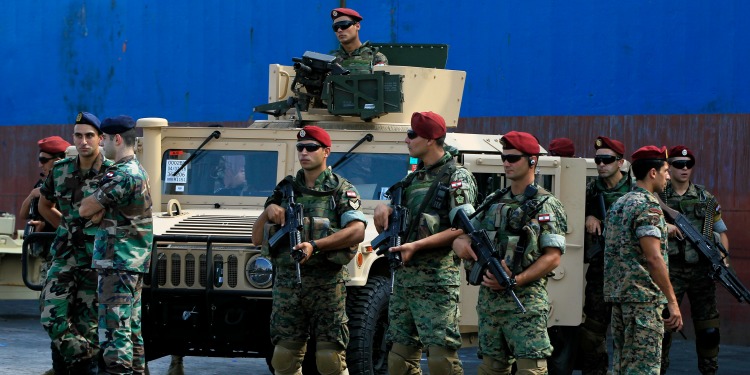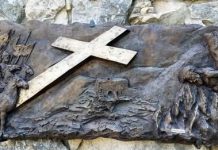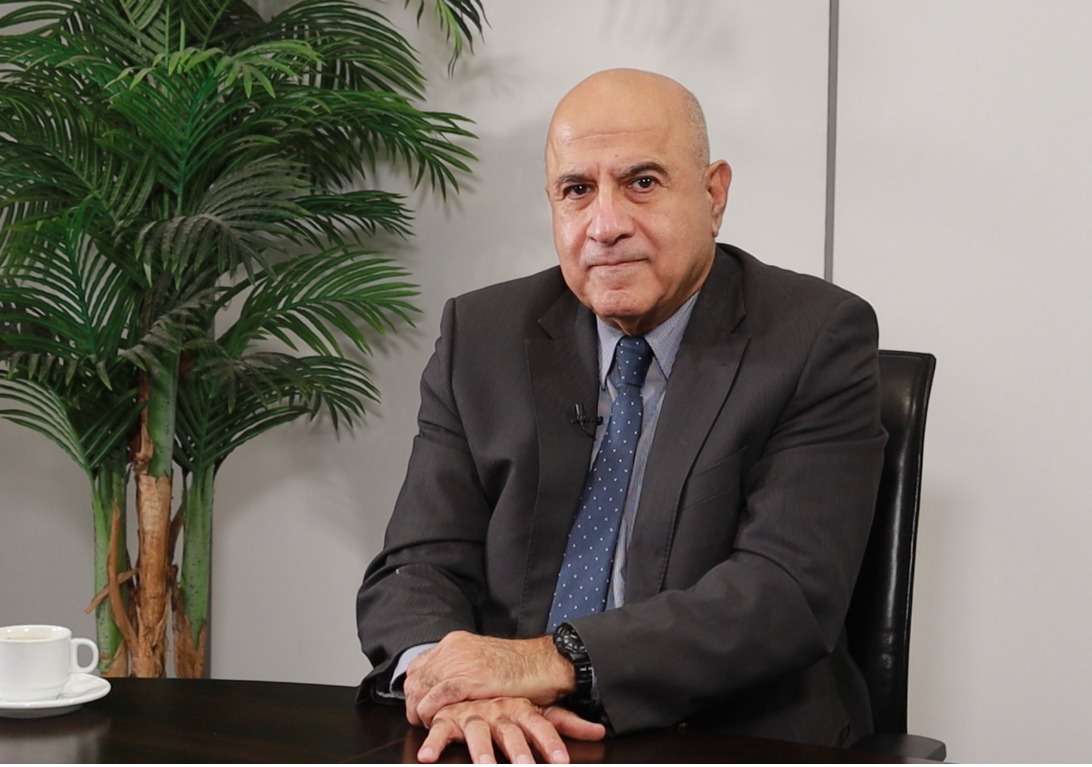The Lebanese Armed Forces and Hezbollah: Military Dualism in Post-War Lebanon
أرام ناركزيان: الجيش اللبناني وحزب الله: الثنائي العسكري في لبنان ما بعد الحرب
Aram Nerguizian/Italian Institute for International Political Studies/November 05/18
Lebanon’s competing sectarian political parties have devised a delicately-balanced political system leaving them stronger than state institutions. Despite the primacy of this system, the Lebanese Armed Forces (LAF) have become an increasingly professional and capable national military institution after the withdrawal of Syrian troops from Lebanon in 2005. However the LAF has failed to curtail the autonomy of Lebanon’s political forces, and it has struggled to stave off political penetration of military ranks.
This paradox, combined with the geopolitical forces that shaped Lebanon’s post-war political order, have led to the hybridization of security governance, wherein parallel non-state military actors retain both their operational autonomy and national security legitimacy.
The most obvious manifestation of this are the asymmetric military forces of Hezbollah, a militant Shia political movement which has been represented in parliament continuously since 1992 and at the ministerial level in the Council of Ministers since 2005.
This military dualism endured for almost thirty years, during which the LAF and Hezbollah simultaneously enjoyed a degree of legitimacy and cohabited despite their divergent raisons d’être and developmental trajectories. However, as they evolved and expanded their national security roles and prerogatives in post-Syria Lebanon, military dualism became increasingly brittle as new lines of friction between the LAF and Hezbollah turned into lasting features of Lebanon’s national security landscape.
THE RISE OF MILITARY DUALISM IN POST-WAR LEBANON
Hybrid security governance is an anomalous feature of post-war Lebanon. Soon after independence in 1943, the LAF acquired the role of arbiter between rival sectarian and political alliances in 1958 when the LAF intervened directly to neutralize the political imbalance created by a short-lived civil war. The ensuing counter-struggle by confessional elites to restore their patronage networks culminated in the defeat of the military-backed political establishment in the 1970 presidential election and the dismantling of the Deuxième Bureau – the LAF’s military intelligence apparatus. The long civil war of 1975-1990 consequently fragmented the LAF along sectarian lines, and gave way to the sectarian militia order of the civil war years.
As part of Lebanon’s postwar political settlement under the Ta’if Agreement (1989), militias successfully underwent disarmament, demobilization, and partial reintegration. The Pax Syriana era transformed the LAF substantially. Syria’s security and intelligence apparatus in Lebanon worked to recast the LAF into an impenetrable pro-Syrian institution, disconnected from government oversight and control. The former achieved this by interposing itself between the Lebanese military and the country’s political system, thereby quickly penetrating and regulating Lebanese civil-military affairs.
In parallel, one key exception to the dismantling of Lebanon’s post-war militia order was Hezbollah, which enjoyed support from Syria and political patronage from its main international sponsor Iran. Though the civil war was over, Ta’if would serve to reinforce and legitimize the group under the aegis of Lebanese “Resistance” against Israeli occupation, at a time when Israel controlled 10 percent of Lebanon’s territory, thereby consecrating the hybrid security governance system that remains a divisive feature of Lebanon’s national security landscape.
The departure of Syria’s military and intelligence personnel in 2005 disrupted its monopoly on Lebanese foreign and military policy decision-making. Their departure also heralded the return of polarized sectarian politics, the decay of Lebanon’s post-war executive structure, and competing efforts to penetrate and shape the orientation of the post-Syria LAF.
SECURITY POLITICS IN POST-SYRIA LEBANON
The 2005 to 2017 period was defined by two competing trends in hybrid security governance in post-war Lebanon. On the one hand, the LAF attempted to maintain and develop its military credibility and autonomy. On the other, competing political factions rapidly reasserted themselves after the withdrawal of Syrian security and intelligence personnel and were eager to penetrate and regulate the post-Syria LAF.
First, between 2005 and 2008, the pro-Western 14 March alliance sought to marginalize officers who had either trained in Syria or who had ties to pro-Syrian political forces. The rival 8 March alliance aligned with Syria and Iran similarly sought in 2008-2010 to sideline officers who had received U.S. military education, or were suspected of supporting U.S. policies in the region. Both political camps solicited officers seen to be ideologically sympathetic and strove to promote their professional advancement.
While the LAF struggled to define and preserve itself amidst the polarization of post-Syria Lebanon, Hezbollah sought to adapt to changing regional fortunes. During much of the post-war period, Hezbollah’s power and autonomy were limited by the preferences of the Assad regime in Damascus. However, faced with a growing array of Western-led pressures meant to isolate both Hezbollah in Lebanon and Syria regionally, Hezbollah quickly gained greater freedom of action at the domestic political level in Lebanon. Meanwhile, driven by strategic competition with U.S. regional allies Saudi Arabia and Israel, Tehran would seek to further develop the militant group’s asymmetric deterrence capabilities.
The LAF’s and Hezbollah’s post-Syria priorities were often in tension over the 2005 to 2010 period. The 2006 war between Israel and Hezbollah showed that Syria and Iran could use the transfer of ever-more advanced weapons systems to bolster the group’s domestic and regional bona fides. By contrast, the LAF was largely a bystander in the 33-day conflict of 2006 with only symbolic actions against Israeli forces. Conversely, the LAF’s 2007 fight against Fatah al-Islam militants in the Nahr el-Bared Palestinian refugee camp showed that the LAF could assert itself and play a preeminent national security role despite the Government of Lebanon’s and the country’s competing March 8 and March 14 alliances’ reluctance to follow suit.
While 2007 was a low point for hybrid security governance, 2008 saw painful reversals when the LAF avoided a direct confrontation with Hezbollah during Beirut street clashes between the Shia militant group and an embryonic Sunni militia of the mainly Sunni 14 March-aligned Future Movement. Some in the LAF saw May 2008 as a case of military neutrality; conversely, others saw it as a “missed opportunity” for the military to signal its objection to domestic military action by any of the country’s competing political/sectarian forces.
The geopolitical battle for Syria started in late 2010 made these competing trends even more complex. Buoyed by mainly U.S. external security assistance and the threat from the spillover of jihadist groups like the Islamic State in Iraq and Syria (ISIS) from the Syrian civil war, the LAF saw active combat in in 2012 and 2013, while the LAF engaged in large-scale defensive and offensive military operations in 2014 and 2017 respectively, against an external military threat for the first time in the post-war period. Meanwhile, an active military role alongside Assad regime forces in Syria, and the increasingly sectarian nature of Syria’s civil war, enabled Hezbollah to bolster its own national security narrative in Lebanon and the region.
Initially, the LAF’s post-2010 posture in the national security arena seemed poised to erode the rational for hybrid security arrangements in post-war Lebanon. However, the LAF’s thrust to assert national security primacy over groups like Hezbollah would soon begin to stall. An unprecedented military leadership crisis between August 2016 and March 2017 proved especially detrimental: a protracted stalemate in Lebanon’s sectarian political system led to the retirement of key senior officers, botched critical transitions in key command-level posts, and saw the advancement of officers that were either unwilling or unable to sustain the arc of the LAF’s 2010-2016 military transformation.
THE LIMITS OF MILITARY AUTONOMY IN POST-WAR LEBANON
The LAF’s 2017 Dawn of the Hills campaign against the Islamic State in Iraq and Syria (ISIS) illustrates the durability of military dualism in post-war Lebanon. The LAF’s meticulously executed operation caught Hezbollah and most of Lebanon’s sectarian political forces by surprise. However, rather than decisively challenging hybridity in national security politics, the LAF’s national security credibility was challenged yet again when Hezbollah unilaterally reached an agreement for ISIS to withdraw from Lebanon, retroactively took credit for LAF successes, and promoted a narrative of secret cooperation between its cadres, the LAF, and Assad forces.
There is little doubt that the post-war LAF remains the country’s most representative national institution, and highly popular across Lebanon’s confessional dividing lines. It enjoys strong relationships with key international partners, including the United States, has significantly bolstered its national security credentials, and it is eager to play a larger national security role.
However, the LAF cannot unilaterally counter the sources of national security hybridity in post-Syria Lebanon: the very same confessional political system that grants Hezbollah a level of communal integration and protection the military can scarcely hope to challenge alone.
In turn, Hezbollah benefits from its preeminent role in Lebanon’s post-war political order. No state institution – including the LAF – will openly challenge Hezbollah’s domestic credibility with its own Shia constituency, and the group’s Resistance operations and expeditionary campaign in Syria have further strengthened Hezbollah’s domestic legitimacy. However, unlike the LAF, Hezbollah does not have the legitimacy and credibility of one of the Middle East’s few fighting militaries, and its preference for hybrid security arrangements does not enjoy the kind of support that was afforded to the group as a result of the 2006 Israeli-Hezbollah conflict.
On the surface, the determination that both the LAF and Hezbollah wish to play a larger role shaping Lebanese national security politics suggests that there may not be enough room for two preeminent – albeit very distinct – military institutions in post-war Lebanon. However, Hezbollah’s role as a key player in Lebanon’s sectarian political system, and the LAF’s struggle for autonomy in post-war Syria have served to blunt the possibility of open confrontation between the two thus far. Whether this unstable balance persists or not will depend on the trajectory of Lebanon’s precarious sectarian politics, the scale and scope of regional and strategic competition in the Levant, and the ever-present wild card of another Israeli-Hezbollah conflict.






















